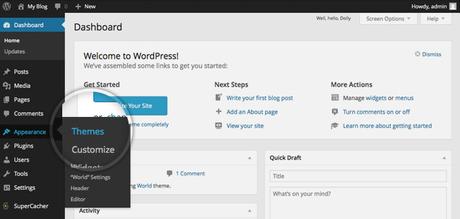
About 20 years ago the Internet used to be just an informational tool. During those days, when "World Wide Web" was just approaching puberty, websites were simple, basic and provided a one-sided conversation. As time progressed, Internet became evolved into a more comprehensive and interactive mode with the introduction of transaction-based websites and online shopping.
Then came the moment when the online world experienced a sudden boost and changed with the evolution of Web 2.0 (the social web). This was the time when user-generated contents became a crucial part of the online world. Today, we have reached a stage where websites provide a two-way conversation and blogs are taking over. In this detailed guide of blogging you will learn how to start a blog under 15 minutes in WordPress.
Over the years, internet has seen an all-time boost with social media platforms like Facebook, Twitter, Linkedin, etc. taking over the ranks. News, education, entertainment, knowledge, health, etc. have found a new and concrete platform for showcase through Google and YouTube.
The internet has grown faster than ever before and today anyone can build a website for free. Since the late 1990's, blogging has created a new and unique platform to share and spread knowledge and opinion through online contents and posts. It has now become a genuine profession that earns you both income and respect.
If you go out on a survey, you will find millions of blogs being created every day across the globe.
(Tips and tricks)Once you have read through all the necessary steps and requirements for building your blog, let me take you through a quick and brief run through for revision purposes. The following steps are more of tips and tricks, rather than a typical guide.
- Choose your website platform.
- Get a domain name.
- Use a cheap and reliable web hosting solution.
- Choose the advertising that is right for your blog.
- Sign up to and use affiliate programs to sell other's products.
- Choose and contact reputed and established potential advertisers.
- Market your services to your readers.
- Use your blogs to deepen existing relationship with your customers.
- Write and upload relevant and good quality contents.
- Update and optimise your blog on a regular basis.
- Install and add useful plugins for added features and functionalities.
- Use SEO techniques to attract more visitors and traffic to your blog.
With the advent of Web 2.0 and social networking, blogging has gained much popularity. Blogging has become an online diary for thousands of people. It has also had crucial impacts on the world of politics, business and society with their contents. People and businesses are recognising the power of bloggers as online influencers.
Just for some extra knowledge, there are a few popular and important variations of the term "Blogging" that you should be aware of, if you are thinking to start your own blog.
Blogging is simply the act of writing a post for a blog.
A blogger is simply a person who writes/creates content for a blog.
Blogosphere is an online community consisting of blogs and bloggers.
There potentially 5 types of bloggers recognised according to the existing trends and technologies today:
These people consider blogging as a hobby and blog for fun. Their works mostly include blogs on personal musings, etc. and don't earn an income from it. More than 60% of these bloggers spend less than 4 hours a week on blogging.
These are the people who use blogging to earn a side income to supplement their primary source of income.
These are the people who have taken up blogging as a full time profession and treat it as their primary source of income.
These are the people, who blog as a part of their full time job. They can even work full time for an organisation. Work from these bloggers make up to almost 8% of the total blogs.
These are the people, who blog for a company they own. This is most commonly seen in cases of start up entrepreneurs. Work from these bloggers make up to almost 13% of the total blogs.
Why is blogging good for business?
Since the past half decade, blogging has evolved as the next big thing for various startups as well as for well-established businesses. Businesses have taken up blogging and social media as an aid to reach the masses and promote their products and services virally on and through the internet. Here is a comprehensive list of points to prove why blogging is good, or rather great for any kind of business.
- Small businesses and start ups with blogs generate 126% more leads.
- An interesting content is one of the top 2 reasons why people follow brands on social media.
- Over 30% of marketers and companies believe that blogs are the most important type of content marketing.
- More than 75% of consumers today trust advice, information and reviews from blogs.
- Around 90% of consumers find the contents useful and reliable.
- 60% of consumers feel a company's credibility and positivity after reading their site.
- Around 80% of consumers today enjoy reading relevant contents from brands and companies.
- Around 70% of consumers learn about a company through blogs and articles rather than ads.
Blogging: Facts and figures
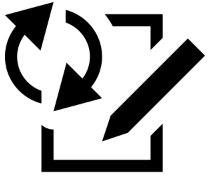
- Over 6.5 million people across the globe blog on blogging sites.
- Around 12 million people across the globe blog on social networking platforms like Facebook, Twitter, Linkedin, Tumblr, etc.
- Surveys reveal that people spend around 23% of internet time on blogs and social networking.
- Around 75% of internet users read blogs.
- Around 53% of bloggers from across the globe are between the age group of 21 - 35.
- The majority of bloggers today are women.
Top 10 highest earning blogs 2021
Here is an updated list of the top 10 highest earning blogs in the world.
- The Huffington post (Monthly earnings: ~$2,330,0000)
- Mashable (Monthly earnings: ~$560,000)
- Perez Hilton (Monthly earnings: ~$450,000)
- TechCrunch (Monthly earnings: ~$400,000)
- Smashing magazine (Monthly earnings: ~$190,000)
- Timothy Sykes (Monthly earnings: ~$150,000)
- Gothamist (Monthly earnings: ~$110,000)
- Tuts Plus (Monthly earnings: ~$110,000)
- Car advice (Monthly earnings: ~$70,000)
- Venture beat (Monthly earnings: ~$60,000)
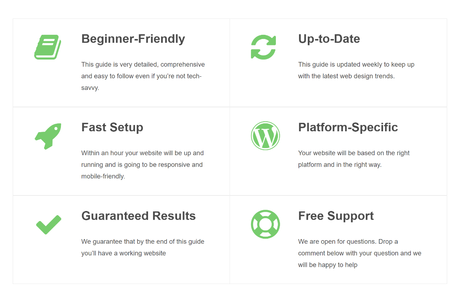
- This blog setup guide is simple and PERFECT FOR BEGINNERS.
- Direct and easy to understand. This guide is not complicated and we guarantee you will have a well functioning blog by the end of this guide.
- This guide is up to date with the latest facts and trends and is updated on a regular basis.
- This guide has been created primarily focusing on the WordPress platform to get you best results.
- Help on demand. Contact me via email or drop your comments down below. I will be glad to help you with your queries.
- IT IS FREE!
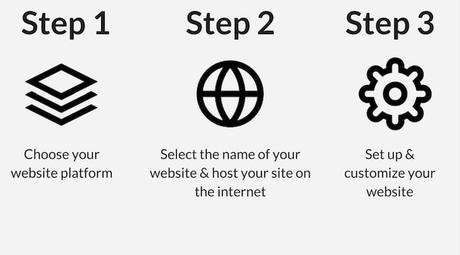 Steps to build a blog
Steps to build a blog Just like any other normal web site, there are various steps and requirements to create a blog. In this guide, I have compressed that list of requirements into 3 major steps with all other general steps revolving around it. So let's jump right into it without any further ado.
Step 1: Choose your website platform.
Step 2: Choose a domain name and hosting.
Step 3: Customise and tweak your website.
A blog is just another type of web site which requires a basic set up platform, domain name, hosting and customizations. Once you've set up these things, it's your choice to make it a blog or an online store.
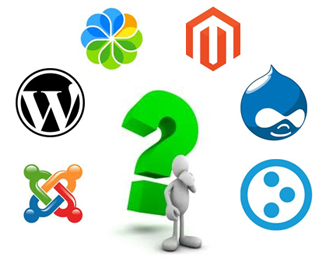
The first thing you need to worry about is deciding which platform you're going to build your website with. You should preferably choose a user-friendly platform for building your website and managing your own online content.
A Content Management System (CMS) or website building platform has made website building accessible to literally anyone and allows you to create your website and handle it instead of using a bunch of loose HTML pages.
There are numerous website building platforms in today's date, each having varying difficulties, functions and features. Here is a percentage breakdown of the most popularly used website building platforms today.
HubSpot CMS is one of the most user-friendly content management systems in the market. It allows you to create all sorts of pages and automatically optimises your content for mobile and search engines. Additionally, you can personalise your content for each website visitor based on location, source, device, language, or any other detail stored in your HubSpot CRM , from demographic information to your contacts' interactions with your brand.
WordPress is clearly the most preferred and used website building platform and leads the chart by a huge margin. Let me list down the key factors that give WordPress such a comprehensive lead over other rival platforms like Drupal and Joomla. There are a bunch of advantages to be pointed out.
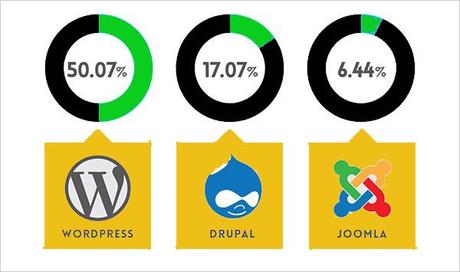
Anything that's free, garners massive attraction. WordPress is no exception. You will not have to worry about creating a paid account for it. You won't have to pay any downloading or installation cost. IT'S COMPLETELY
- Highly customizable and easy to use.
WordPress is the easiest platform I've worked with. It has an easy user interface and is highly flexible and will suit everyone's purpose. When it comes to customisation, WordPress offers a huge community who have designed attractive themes, layouts and templates that you can choose from, to beautify your website.
It's more important to be "Beginner friendly" than being "User friendly". WordPress has an entire collection of useful and free plugins that enable you to handle any type of site you wish to create. "Plugins" enable you to add contact forms, subscription forms, image galleries, etc. and offer a more interactive set up to your website.
- Great for both, small and large websites.
WordPress can easily handle light sized blogs to large scale business websites and online stores. In fact, WordPress is used by large scale sites like eBay, Mozilla, CNN and even NASA.
- Responsiveness and compatibility.
Once you build a website, you would want it to function on almost every mobile device possible. Websites built through WordPress are responsive and work on smartphones, tablets and laptops .
You don't need any technical coding to create a website on WordPress. Perhaps this is the prime reason why WordPress is the most preferred website building platform today.
WordPress provides you the best search engine optimisation (SEO), which makes your website more likely to attract more customers.
WordPress though is NOT THE ONLY OPTION to create a website. Choosing a platform depends solely on your knowledge, preference and comfort.
Drupal is a powerful platform popularly used by experienced coders and web developers. It relies on a lot of basic understanding of HTML to create any substantial content. Unless you are some IT geek or a software professional, Iwould strongly suggest not to use Drupal.
Joomla is a website building platform that is one of the best for developing E-commerce websites and does have some user-friendly elements as well. In terms of difficulty, Joomla falls somewhere between WordPress and Drupal. It is an easy platform to work with, but you will need a little knowledge on technical coding to make your website work the way you want through this platform.
So if you are a beginner and do not want to get into any coding hassles and complex technicalities, I would suggest you to stick to WordPress.
Step 2 puts in front two important requirements for the proper existence and functioning of your website:
- A domain name (Something like yourblogname.com)
- A host (To connect your site to the internet)
A domain name is simply the web address that you will type into the search or URL bar to navigate to your site. It will be your personal blog address where people find you over and over again. It defines the very existence and identity of your website.
A domain name can be chosen by either purchasing your own custom domain name through your preferred website builder, or you can purchase it on your own through online domain registrars GoDaddy or NameCheap.
A host is a medium that connects your website to the internet server. Having a hosting server will make your website load quickly and people can access it easily. Without web hosting, you'll be unable to use your domain.
I would strictly suggest NOT TO create a "FREE" website/blog as it has a list of disadvantages that will put you down.
- Free websites are owned by the provider, NOT YOU.
- Such websites can be taken down any time without prior notice.
- The provider will put their own ads on your site.
- You can't make money from a free website.
If you search on the internet, you will find there are countless of authorised and reliable sites on the internet from where you can get your Domain name and hosting. But if you ask me to pick one out of the lot, my personal preference would be www.Bluehost.com
Why Bluehost.com?

Bluehost is an online hosting and domain registrar that offers hosting at reasonable and pocket friendly costs just around $2.95 - $3.49 per month and they even offer you a FREE domain name. Their hosting management is seemingly one of the best I have come across. On the technical front, Bluehost provides and offers unlimited storage & bandwidth. I always prefer buying my hosting and domain from Bluehost for my various projects.
Once you are done buying a domain name and hosting, you will also be provided with a personal email account(s): [email protected] specifically for your website. Email accounts like these, offer a far more professional approach to your business.
You may even try to host your site by yourself, but that may turn out to be a very complicated and time consuming process. Hence it would be rather better and sensible for you to save some time and money and get a proper host that meets your Website requirements.
How do I choose a domain name?

Like I mentioned earlier, a domain name defines the identity of your website. You should always think of a domain name that is SIMPLE AND DIRECT. People should be able to easily find your site and remember the name so they can share it with others.
- Be relevant to your business/service.
- Justify and reflect the idea and purpose of your website.
- Be easy to remember.
- Be simple and direct.
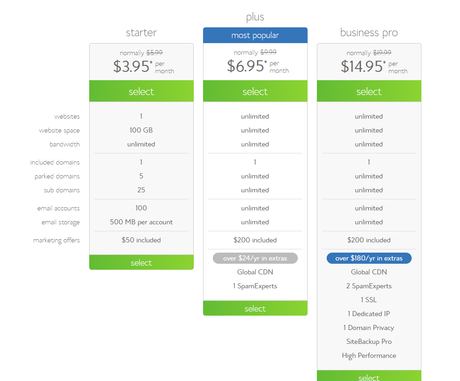
If you are creating a website for non-commercial activities like broadcasting views and contents through blogging, then the domain name of your website should be something like Yourname.com or Yourblogname.com
Always remember to secure your domain name and web hosting before you continue with your website setup. This process is called Domain Privacy Protection (DPP). It hides your registration information in the "whois" database. It is worldwide database that everyone has access to.
I would strongly recommend this if you want to keep yourself secure and anonymous. Bluehost.com allows you to do this without any hassle.
Setting up WordPress and customisation
Step 1 and 2 described the basic foundation of your website/blog. Now let's get it up and running. The next important thing you need to do is set up WordPress by installing it to your domain.
This can be achieved in two ways. One is very easy and direct, while the other one is very hard and complicated.
It must be clear from the name itself that this process is a direct and quicker way to install WordPress into your domain. Most hosting websites offer integrated "One-click installation" options to make the installation process faster.
- You will need to visit Bluehost.com (Or your chosen hosting site) and log in to your account to get started.
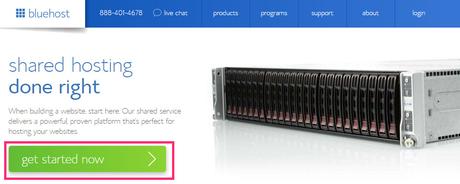
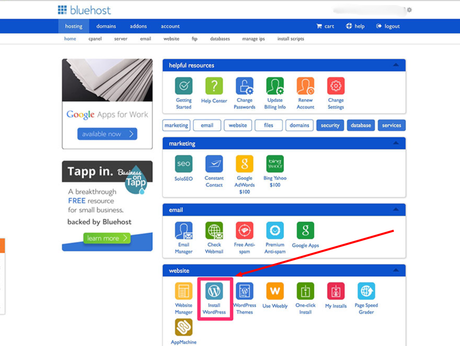
- You will find the "WordPresss" icon.
- Choose your domain where you want to install your website.
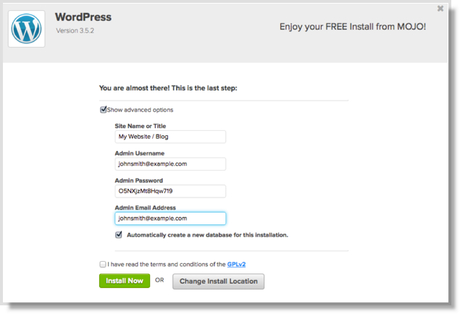
- Click on the "Install now" button.
- You will now get an access to your WordPress website.

In some really rare and mysterious cases, a hosting site does not provide the "One-click installation" option. In such a situation, manual installation shall be used.
Manual installation is also possible if you are unable to go for the "One-click". This process though is needlessly complicated, but it has to be followed when required. Here is a quick guide on how to go ahead with it.
- Download WordPress from here: http://wordpress.org/download
- Create a new folder on your desktop and unzip WordPress in it.
- Look for a file named wp-config-sample.php
- Rename it to: wp-config.php
- Open the wp-config.php and fill the following lines:
- define('DB_NAME', 'database_name_here');
- define('DB_USER', 'username_here'); - Enter your hosting username
- define('DB_PASSWORD', 'password_here'); - Enter your hosting password
- Now save the file after making the above changes.
- Go to com/wp-admin
- Enter your username and password which you used to create your WordPress account.
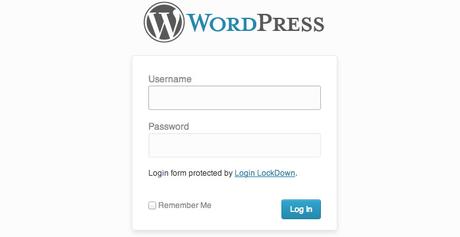
- The first page that will load up for you will be showing your WordPress admin menu.
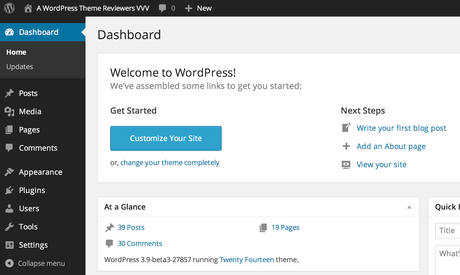

You will find a list of various options in the menu sidebar to click and explore, but for now, let me take you through the initial customizations and settings.
Now, let's get you in with the login process.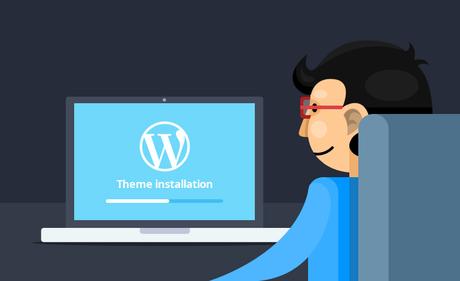
- Scroll down the dashboard to find the "Appearance" option.
- Click on "Themes"
- Now click on the "Add New" button on the top and choose from the various themes displayed. You can even search for themes according to your preference.
- After you have chosen your preferred theme, install it and activate it.
WordPress allows you to add pages to your blog according to your preference. You should add pages to your blog that are relevant and make sense. Pages like a "Services" page, "About me/us" page, "Contact me/us" page, "Contents" page, etc., all can be added to your blog.
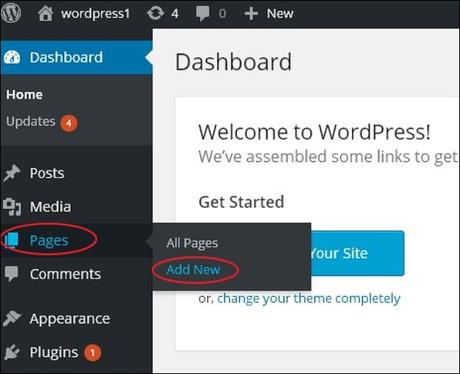
Free Premium Theme - Themify Ultra
If you're looking for a WordPress theme, chances are it's rare to find something that is both beautiful AND free. We've partnered with Themify to offer you a free version of their most popular theme, Themify Ultra. The free version we are currently offering is a stable version of the official and most recent version of the Ultra theme.
General settings and customizationsThe Ultra is loaded with a number of instant demo import sites that actually function and work for their intended use. Use their shop to market your affiliate product links and make the most of your E-Commerce WordPress site. Perhaps you need to set up a quick portfolio site - this is easy using their instant demo import. Create a site with identical features and layout, and use Themify's industry-recognised Builder to tweak as much or as little as you want!

It is intended for personal and educational uses only. It has all the features of the premium version except the 12 bonus Builder Add-ons are not included. If you like it and would like to take your relationship with Themify to the next level, we have a 20% off coupon code for you. Please use this coupon code for your 20% off today: BLOGGERSIDEAS
Ultra Theme Features
The Ultra Theme will give users access to the following:
- 19+ Skins/Demos (Including the New Ultra Coffee Skin, Lifestyle Blogger Skin, Horizontal Skin for photo bloggers, and so much more!)
- 12 Free Bonus Builder Add-ons (Not available in this free, educational version of Ultra)
- Use On An Unlimited Number of Sites
- Access to One Year of Downloads, Updates, and Support
- 30 Day Money Back Guarantee!
How to Install Themify Ultra:
- Download the themify-ultra.zip and save it on your computer (don't need to extract the zip file)
- Go to Dashboard > Themes, click "Add new", then click on themify-ultra "Upload Theme" button
- Upload the themify-ultra.zip and activate it
Themify Ultra documentation: for more information on how to use the Ultra theme, refer to their Ultra theme documentation.
- Just go to the "Pages" option in the dashboard side menu.
- Bring your cursor over it and click on "Add new".
- When you do so, it will open up a blank screen that looks similar to what you have seen and used in Microsoft Word.
- You can add text, images and more to build the page the way you want, and then save it when you're done.
A homepage is the face of a website or blog. It makes your website look more organised and acts as a neat entrance to your blogs and posts. If your website doesn't have a homepage, then your posts will show up there each time you create one. This looks kind of untidy and unprofessional.
Creating a homepage for your website involves 3 very simple steps. Here's how you can do it.
- Go to"Settings" and then "Reading".
- You will find two options for creating pages. Front page is your home page and Posts page is the page for your blog.
- Choose the page you want to add.
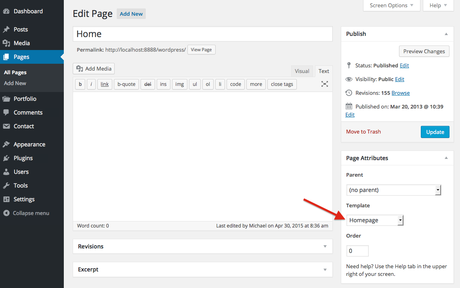
Once you have learnt how add a page to your blog, now let's learn how to add some posts and edit them. There is nothing to tricky about this. The first thing you need to do is decide the appropriate category of the post you are going to write. Your blog posts can be organised into different categories based on the topic you are writing on.
- To add categories for your posts, just go to "Posts" and then "Categories". You can add as many categories as you want to this list according to the contents you come up with as your blog matures.
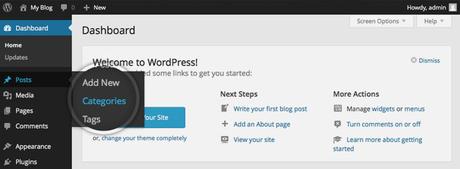
- You can also choose to add your categories after you are done writing your entire post.
- Check the proper box in the categories section when you are finished writing your post.
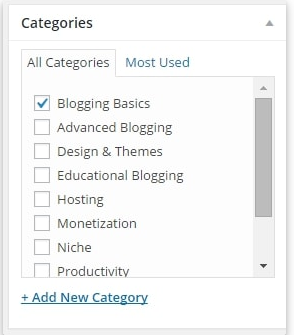
- Every post you write keeps getting saved automatically after every change you make. But I would still recommend you to manually save your draft changes after every update.
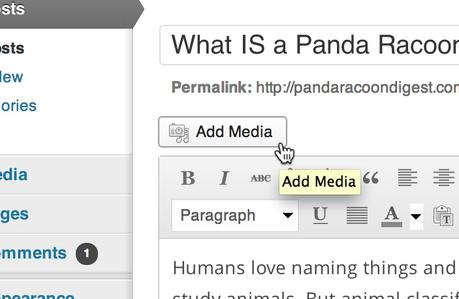
Posts having images and media are catchy and can easily attract audiences. A good content should always have relevant media and images along with it to keep readers engrossed and let them relate to your posts easily. Images also make your posts more understandable.
Here's a full list of files supported by WordPress that can be uploaded to your posts:
- .pdf (Portable Document Format; Adobe Acrobat)
- .doc, .docx (Microsoft Word Document)
- .ppt, .pptx, .pps, .ppsx (Microsoft PowerPoint Presentation)
- .odt (OpenDocument Text Document)
- .xls, .xlsx (Microsoft Excel Document)
- .psd (Adobe Photoshop Document)
Always remember to add an image title, a description and caption to the image. But it's more important to add an "Alt text" to it. This helps search engines identify your images.
It is always necessary and recommended to insert useful and relevant links into your posts. These are called "Chain links" and are often required to provide an extension to your research and knowledge by adding video links, news links, links to other well recognised blogs and many more.

DO NOT add unnecessary or extra links. The links you add should be relevant to your content and must help enhance the readability of your posts.
A page title will be what people see on search engines when your site or its pages show up in the search results. You should always remember to use the appropriate keywords for the page title of your website. Make sure to keep it SIMPLE AND DIRECT.
Adding media to your postsA tagline is added to the page title to simply add a little more meaning to it.
You can manage both your page title and tagline by heading to "Settings", then "General".
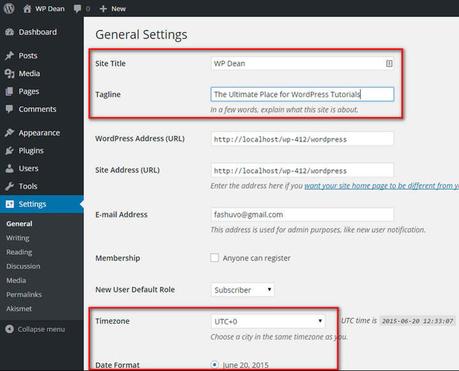
Comments are a very integral part of any website. It gives a more interactive feel to your website, be it a blog, niche website or even and online store. Allowing your readers to post comments often lets you know how good or bad your post is. Comments also help in improving your future posts and website optimisations, based on the views and opinions from viewers. It is a useful way to stay in touch with your readers.
Images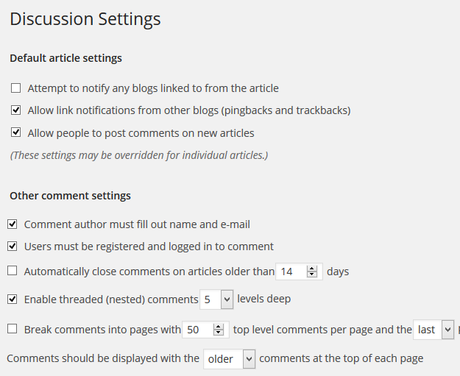 Documents
Documents While many find having people commenting on their posts pretty useful, some may not want people commenting on pages or posts. Access to settings for comments can be easily found in the WordPress menu. Just click "Settings", then "Discussion". Now check or uncheck the "Allow Comments" option according to your preference, whether you want to enable or disable comments in your posts.
How to Add Plugins In WordPress
AudioPlugins are codes that will enable your website or blog to perform various functions. If you want to add more features and optimise the functionality of your website, then adding plugins is a must. These are simply extensions that allows you to enhance the capabilities of your website.
VideoIf you install plugins, you will be able to get your website to do what you want to. Plugins are very useful for almost everything including adding photo galleries and submission forms.
NOTE: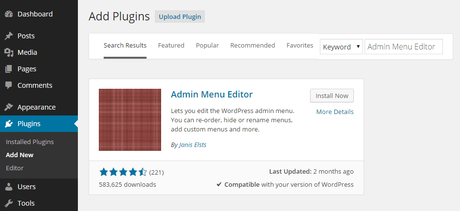
If you want to start adding new plugins to your website, you will need to first install plugins.
- Go to "Plugins", then "Add new" and start searching.
- You will find thousands of plugins to choose from. Once you have found the plugin you like, just click on "Install".

HubSpot All-in-One Marketing offers all the free tools you need to do marketing on your WordPress website. It allows you to create lead capture forms and popups, add a live chat to your site (even chat bots!), and it syncs all of your contacts' information in a CRM so you can stay organised.
Page title/Site title setup Taglines
This plugin allows you to edit your title tags, meta descriptions and a lot more before publishing the post. All this can be done from within the page itself.
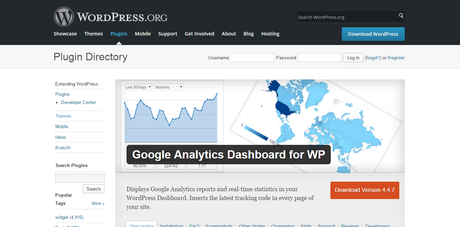
This is a very important tool if you are interested in tracking the visitors/traffic to your website or blog. All you need to do is install the plugin and link it to your Google account.
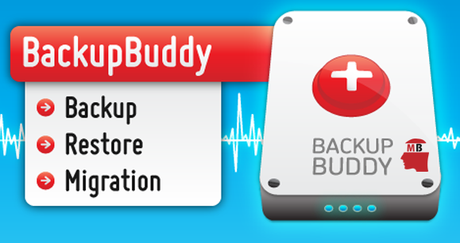
Helps you create an automatic backup for your website or blog. It offers you 1 GB of free cloud storage to store your backups.
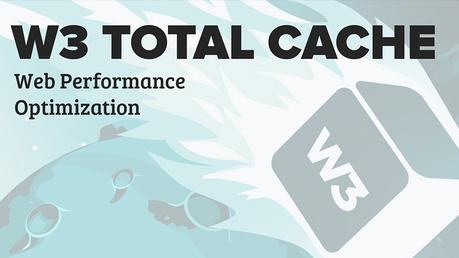
Helps optimise the speed, performance and functionality and also provide advanced control options to your website.
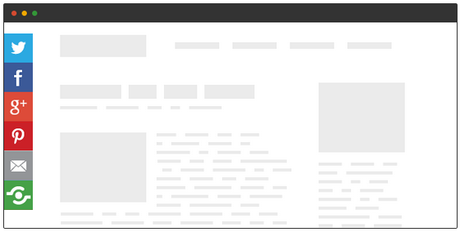
This plugin will let you add share buttons for social media like Facebook, Twitter, Linkedin, etc. FCB will be very crucial for publicity of your blog or posts to various social media platforms by your visitors.
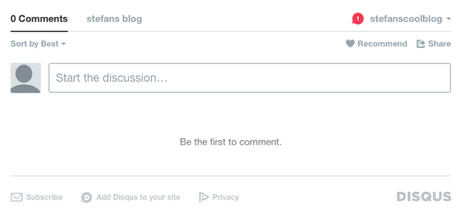
If you are blogging, then you are bound to have a number of comments and opinions posted by your readers on your posts. Disqus helps manage your posts when a large amount of comments drop in. It also provides a voting system for displaying the top comments.
HubSpot All-in-One Marketing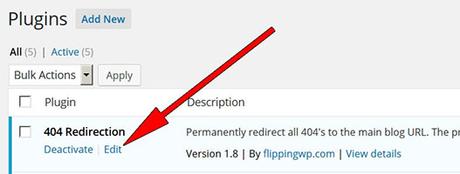
This plugin simply helps redirect broken pages back to your homepage.
There will be hundreds of different plugins that can perform the same function. To help you save some time in choosing and installing the ideal plugins, here is a list of the most popularly used plugins bloggers use today. 1) Yoast SEO (WordPress specific)Things to do AFTER your blog is ready
2) Google analyticsOnce you have set up your blog and have learned the basics, let's take a look into some important things to do post set up. These points will be crucial, if you want to make your blog a success.
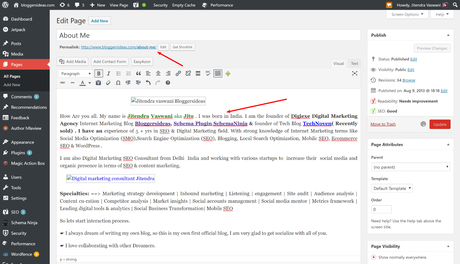
This page simply tells your readers about the creator or author of the website or blog. It is usually the most visited page in a blog, so you better put some brains and efforts in making this perfect.
- Your "About me" page should be attractive to grab the attention of your readers. Try opening the page with an interesting header instead of the typical and boring "About me/About us" headline.
- Highlight important and relevant points, terms or sentences in the content to keep your readers interested and engrossed.
- Add relevant and interesting photos, videos, snapshots, etc. from behind the scenes to make it look more personable and presentable. People should be able to connect, relate and be inspired by this content.
- Add some snapshots from social media platforms showing people sharing and commenting about you, your blog and your work. This will add leverage to your credibility and buy the trust of your readers.
- Add a simple and short bio/description about you, your life along with a nice photograph of yours.
- Focus on telling your readers WHY YOU DO IT.
- Don't try to be over creative with your language and grammar. Just write the way you talk.
- Keep the content DIRECT AND RELEVANT.
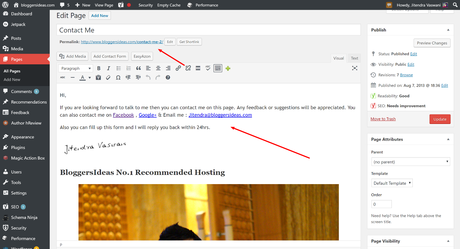
Once you are done with the 'About me" page, it's time to set up your "Contact me" page, so that people can contact you.
For this, you will need to install a plugin called "Contact form 7". This plugin allows your visitors to contact you with their doubts, queries or collaborative projects. They can fill in the form and send you an email without logging into their own email provider.
If you don't want to use Contact Form 7, there are lots of other form plugins out there, including HubSpot All-in-One Marketing . It comes with pre-built templates, including a "contact us" form template that you can easily work off.

- Once you have installed and activated the plugin, you will find a new "Contact" area in the WordPress side menu.
- Click on it and choose "Add New."
- It will open up a coded form in the "Text format".
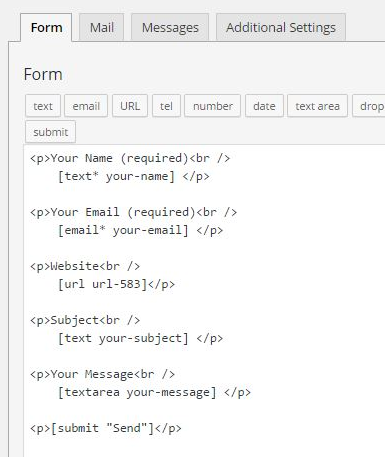
- Your default contact form will include these fields:
- Your Name (Required)
- Your Email (Required)
- Subject
- Your Message
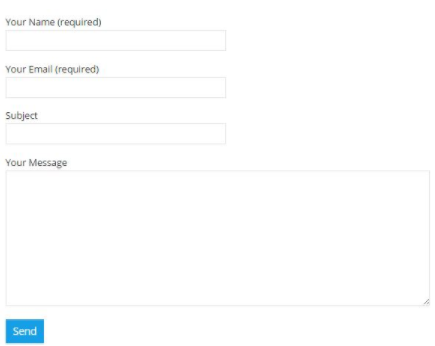
- Fill up this form and click on "Send" to get it approved.
- Once this is done, you need to add this contact form to your blog.
- After you have saved your contact form, you'll notice a short code show up directly below your contact form's title. Copy this code.
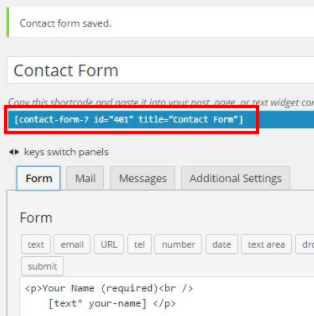
- Now navigate to the page you want to display your contact form on.
- Place your form where you want it to show up. Just right-click, and click on "Paste."
- You can even choose to add your contact form as a widget. Just head to the widgets section in your WordPress side menu.
- Now from the list of available widgets, choose "Text," and then add the widget according to your preference.
- You can add your contact form as a widget in your sidebar or footer.
- Regular redesigning and optimizations
If you want to keep your blog up to date and running, then you yourself as a blogger need to remain updated with the latest in trends and technology.
Audiences are always eager and curious to see something new and attractive. You should enhance your blog in such a way that it creates a positive visual impact on the viewers. Blog optimisation is not just limited to beautification of your site, it also focuses heavily on speed, performance and functionality.
These plugins will help expand your site's features and give you new and enhanced capabilities for a better and smoother growth of your website.If readers find your blog outdated, then it may lead to high bounce rates and decline in traffic.
Also read:Top 5 WordPress Plugins To Make Your Website ResponsiveUseful Guides:
Top 24 Best Rated Web Hosting Services [Updated] Top Best Hosting Providers in Australia Best CHEAP PBN Hosting Reviews How To Host Your PBN
Here's a word of truth. Whether you are creating a blog, a social media site, an online store or any other type of website, SEARCH ENGINE OPTIMIZATION (SEO) is a must have feature for your website. It is the process of getting traffic to your web site from the search results on search engines.
Top 12 WordPress Plugins for Your Business BlogIf you have a blog or are planning to build one, then SEO can help your business grow and meet the business objectives. As a traditional pattern, users always trust the web sites that show up in the top 5 positions of the search results for the keywords they search for. SEO will help your web pages and media contents such as images, videos, etc. get shown and ranked on the basis of what the search engine considers most relevant for its users.
Top 20 Best WordPress Plugins List You Must HaveSEO can put your blog right ahead of your rivals when it comes to competition. For example, If two blogs of similar contents are representing the same product/service/topic, the search engine optimized (SEO) blog is likely to attract more customers and earn better revenue as a result of increased website traffic.
Detailed Grasshopper Discount Coupon CodeManagement of SEO is rather a framework with various rules and processes to be followed and executed carefully than a static process. To make this quick understandable, let us break down the SEO management process into 2 prime stages:
Detailed StableHost ReviewIt is a framework of what rules and regulations are to be applied on your blog to make it search engine friendly. These include basic tweaks that you can apply to your blog and increase its visibility on search engines. It can also improve the credibility of your blog, if followed correctly. All search engines trust your blog on the basis of your web site structure and the SEO.
This is a framework that primarily focuses on how to promote your blog so that it can rank better in search results. You may also think of Off-site SEO as "link building" or "web site promotion". This is because a proper way to promote your blog involves much more methods along with building links.
A "Backlink", "Inbound link" or simply an "Incoming link" is a link from some other website (the referrer) to that web resource (the referent) Websites often employ SEO techniques to increase the number of incoming links pointing to your website. This helps directly in promotion and publicity of your website. The ranking and position of your website also depends greatly on where the links are coming from. Some methods to get incoming links are free for use by everyone whereas some methods, like "link baiting" are paid techniques to increase the number of incoming links to a target website.
Many private blog networks have often been seen to purchase incoming links. But I would strongly recommend you NOT TO TRY to buy links or get them the easy way. Doing so may have some temporary positive impact or short lived success of your blog, but you may then experience high bounce rates and see your web site disappearing from the top pages.
I would really suggest you to forget about building links and rather concentrate more on creating good quality contents for your blog. A good and relevant content always has more chances to get you genuine and natural links, which in turn will give your blog a good ranking and an overall and gradual increase in website traffic.
It would be wrong on my part to say that WordPress is THE ONLY option to build a website. There are definitely other established and reliable website building platforms as well that you can try out. But if you are a beginner, I would strongly recommend you to stick to WordPress. It is the easiest platform I've ever worked with and is flexible enough to suit everyone's purpose. It's free, easily customizable and you don't need any technical coding to create a website here.
On the customisation front, WordPress has a huge community who have designed attractive themes, layouts and templates to choose from, making it easy to get going fast.
Not at all! Technology has eased up to such an extent now that, you can build a website with only a little bit coding or ABSOLUTELY NO CODING! Today you don't need to be an IT engineer or some tech junky to build a website. You don't even need to hire a web developer to the same. WordPress enables you to build your own web site without any coding involved.
Website developers are hired to make your website work on mobile devices as well. A website built through WordPress will be responsive to working on smartphones, tablets and laptops. So hiring a web developer won't be necessary anymore.
You will find there are countless of authorised and reliable sites on the internet from where you can get your Domain name and hosting. But if you ask me to pick one out of the lot, my personal preference would be www.Bluehost.com
Bluehost offers hosting at reasonable and pocket friendly costs just around $2.95 - $3.49 per month and they even offer you a FREE domain name. Their hosting management is seemingly one of the best I have come across. On the technical front, Bluehost provides and offers unlimited storage & bandwidth. You will also be provided with a personal email account specifically for your website or blog. I always prefer buying my hosting and domain from Bluehost for my various projects.
It hardly costs anything to build a properly functioning blog. Costs depend on hosting and domain services that you will use. WordPress and other website building platforms are free, but a domain name and hosting will cost you around $2 - $5 a month. Thus, domain and hosting on yearly basis may be usually around $50 - $60 per year.
Bluehost.com just around $2.95 - $3.49 per month and they even offer you a FREE domain name.
I have described how you can install and add new plugins in the "How do I add and install plugins?" section above.What should I do to optimise my blog?
If readers find your blog outdated, then it may lead to high bounce rates and decline in traffic. Thus, optimising your website on a regular basis is necessary and will help attract more visitors and yield more revenue. Redesigning a blog does not necessarily mean rebuilding it from scratch. It simply means you should make useful changes and facelifts on a regular basis. This includes minor changes like color, themes, and templates to major changes like custom logo design, user interface, website plugins, SEO, and regular up-gradation of your blog contents.
Audiences are always eager and curious to see something new and attractive. You should enhance your blog in such a way that it creates a positive visual impact on the viewers. Blog optimisation is not just limited to beautification of your site, it also focuses heavily on speed, performance and functionality. If you want to keep your blog up to date and running, then you yourself as a blogger need to remain updated with the latest in trends and technology.
Yes! You can upload videos in your posts. Here is a list of video formats that are supported by the WordPress server:
The world of advertising has become so much advanced that advertisements have become the primary source or method of generating revenue from any kind of business, be it online or offline. When it comes to blogging, there are numerous ways in which advertisements and promotions can be done through your blog to fetch revenue.
Once your blog is ready, you must be very much excited to know how your blog will fetch you some revenue. Generating money from a website is definitely some hard work. You can wisely choose to invest the money you earn from your blog into future modifications of your blog or into your other projects as well.
Plugins help expand your site's features and give you new and enhanced capabilities for a better and smoother growth of your blog. There will be hundreds of different plugins that can perform the same function. To help you save some time in choosing and installing the ideal plugins, here is a list of the most popularly used plugins that bloggers use today.
This plugin allows you to edit your title tags, meta descriptions and a lot more before publishing the post. All this can be done from within the page itself.
This is a very important tool if you are interested in tracking the visitors/traffic to your website or blog. All you need to do is install the plugin and link it to your Google account.
This plugin lets you create forms and syncs your lead's information with a CRM.
Helps you create an automatic backup for your website or blog. It offers you 1 GB of free cloud storage to store your backups.
Helps optimise the speed, performance and functionality and also provides advanced control options to your website.
This plugin will let you add share buttons for social media like Facebook, Twitter, Linkedin, etc. FCB will be very crucial for publicity of your blog or posts to various social media platforms by your visitors.
If you are blogging, then you are bound to have a number of comments and opinions posted by your readers on your posts. Disqus helps manage your posts when a large amount of comments drop in. It also provides a voting system for displaying the top comments.
This plugin simply helps redirect broken pages back to your homepage.
Whether you are creating a blog, a social media site, an online store or any other type of website, SEARCH ENGINE OPTIMIZATION (SEO) is a must have feature for your website. It is the process of getting traffic to your web site from the search results on search engines.
If you have a blog or are planning to build one, then SEO can help your business grow and meet the business objectives. As a traditional pattern, Users always trust the web sites that show up in the top 5 positions of the search results for the keywords they search for. SEO will help your web pages and media contents such as images, videos, etc. get shown and ranked on the basis of what the search engine considers most relevant for its users.
SEO can put your blog right ahead of your rivals when it comes to competition. For example, If two blogs or similar contents are representing the same product/service/topic, the search engine optimized (SEO) blog is likely to attract more customers and earn better revenue as a result of increased website traffic.
How to find keywords for my blog or niche ?
I have made this tutorial for Keyword research tool SEMRush and you can see detail video here to find keywords for your niches.
What you are reading RIGHT NOW is a Homer blog. The Homer is any kind of blog that takes its readers on a journey of over 2,500+ words in content. A Homer blog can be about anything starting from health & fitness, Fashion & lifestyle, Educational coaching, Spirituality, Step by step guides and so on. Work on such blogs often requires an excessive brain storming and research to yield effective and observable results and conclusions.
Posts for Homer blogs require a major share of time investment and a hell lot more research. It is very important and rather hard to hold your reader's attention through such a large word count. Research and surveys reveal that long form contents that cross over 2,500+ words tend to get shared more than short form contents. Greater word count and research gives you better chances at attracting organic search traffic.
If you are writing a Homer blog post, what must be your prime concern is getting the length right. You will need to master the art of creating a balance between your research content and the word count. Craft your post in such a way, that you plot in key points of your research without pushing in too many words into the post.
A personal brand blog portrays you as the person who writes the blog. It tends to have your name and face all over the home page. It is the right kind of blog if you are seeking to position themselves as experts or masters in a particular field. Make sure your Personal Brand blog showcases a name that has a personality. This does not at all mean that the posts have to be all about you. Your posts should be framed and aided by your own personal views and experiences.
NOTE:Try writing posts that showcase things like:
When a user enters a search query, search engines will always try to find the most important pages of your blog and show those first instead of the direct home page.- The struggles and failures you have experienced within your field. Tell your readers what you learned from them.
- Self made strategies and techniques you have personally created and tested.
- The tools you have used to achieve results your audiences desire.
- Your personal views and opinions on divisive and valuable issues within your field.
This is the type of blog where you act as a host for publishing posts that mainly come from guest authors. Although your blog will regularly feature content from other guest authors, you as the person behind the blog, can also regularly step back in and write posts of your own. The biggest plus about creating a guest host blog is that you don't have to spend any time creating contents. In fact you can also get help for promoting every post. You can rely on the brand awareness and knowledge of the guest writers you host.
The key to having a great g
